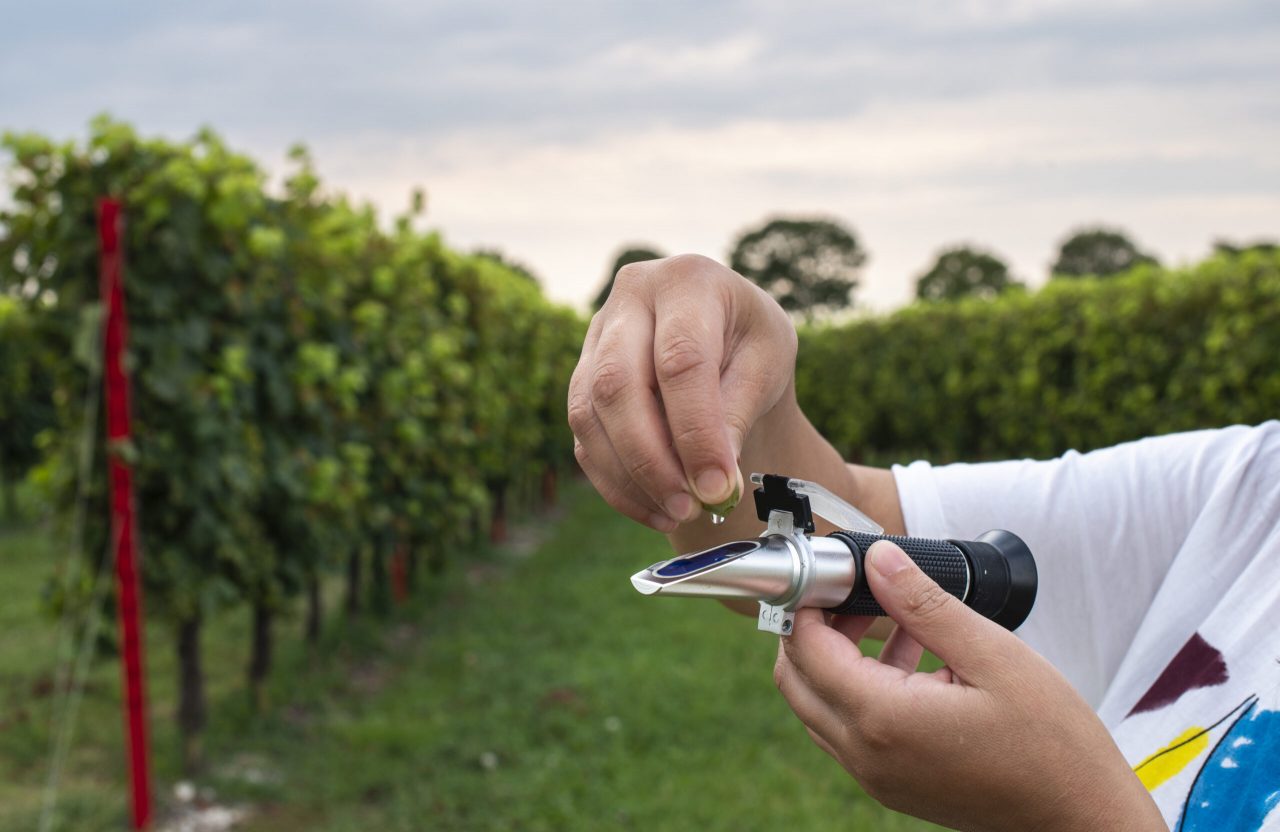The refractometer is a tool designed for measuring refractive indices in substances. It is used in the brewing industry to monitor fermentation and measures sugar concentrations in the original extract, using only small amounts like drops as a sample, where the refractive light passes through it and prevents measurement errors.
Likewise, it is an optical equipment that calculates the specific gravity of the extract, where the amounts of sample are perceived and recorded in liquids in degrees Brix, where its scale is used for beer producers. Thanks to its design, the beer equipment can be used anytime and anywhere and its easy handling makes the refractometer the ideal equipment.
Mode of Use
For optimal results, general considerations for easy handling that provides reliable readings should be taken into account, such as: the equipment should be calibrated with a small sample of the extract to have conviction of the readings. According to the temperature, this equipment has an automatic converter and allows samples to be taken from a pot and the measurement value is displayed easily and efficiently from an LCD screen.
In this sense, for beer manufacturers can calibrate the refractometer with distilled water, taking the sample and letting it cool between 29.4 and 20 ° C, then place it in the tray, observe and finally remove the sample and record. The user must select different quantities, for example: Brix from 0 to 50.00% or a relative density from 1,000 to 1,130. The glass prism that the equipment has, is stainless steel, also has a plastic cover to close it, this must be kept clean for future measurements. Also, with the use of this equipment, the user uses it with the objective of automatic disconnection to extend its use. It is easy to use and shows quick results.
Benefits and Mechanisms of the Refractometer
For brewing beers, the use of the refractometer is of great importance, but requires simple, and fast mechanisms, including:
- Sugar consumption must be measured daily by the fermentation that provides calculations in the behavior of yeast and thus the quality of the processes can be studied.
- The refraction passes from different speeds, being able to be modified and directed.
- It has a scale in degrees Brix where 1° Brix, equivalent to 1 gram of sucrose in 100 grams of solution. However, there is a link to grams of maltose (extract sugar), known as Plato.
- Provides decision support
In this way, the sugary solutions, the light is diverted and their concentration is efficiently realized in the sample, where the density measurements during fermentation are corrected based on the alcohol percentages.
Characteristics
For the brewing sectors, alcohol interference must stand out once fermentation begins, where ethanol and sugar residues together stop the accurate reading of Brix, that is why by using the refractometer cannot be used in finished products or other fermented beverages, because it contains an exclusive design for such use. Its characteristics are as follows:
- Point calibration, with distilled water using small samples as 2 drops of 0.1mL.
- Automatic temperature compensation
- Dual LCD display, showing readings in 1.5 seconds
- Stainless material for easy cleaning and corrosion resistance.
- Battery Indicator
- Power On/Off System
- Carcass in water-resistant plastic.
Ultrasonic Cleaner Brand Kalstein
With the use of our Refractometers belonging to the YR series, substances are analyzed to measure the levels of sucrose, glucose, maltose, among others. They are portable, reliable and accurate. At Kalstein we are manufacturers of the best laboratory equipment with the best and most advanced technology that our customers require. In addition, the cleaning process is safe and reliable, without the need for manual intervention and free from damage to the workpiece surface. To learn more about our catalog, HERE

